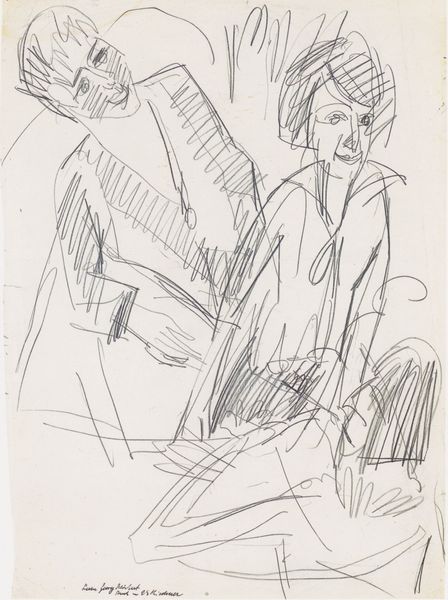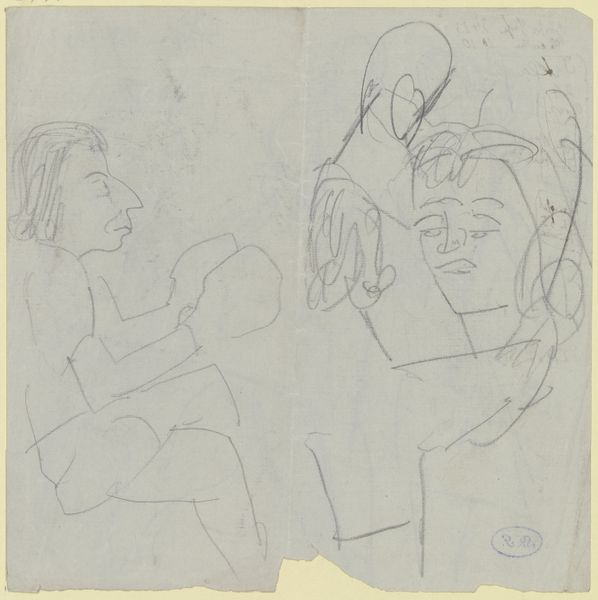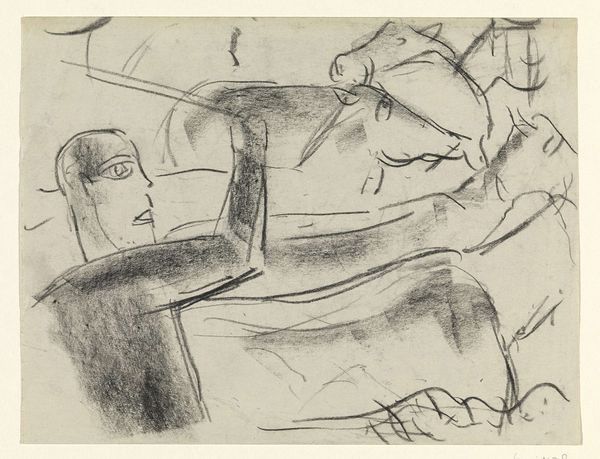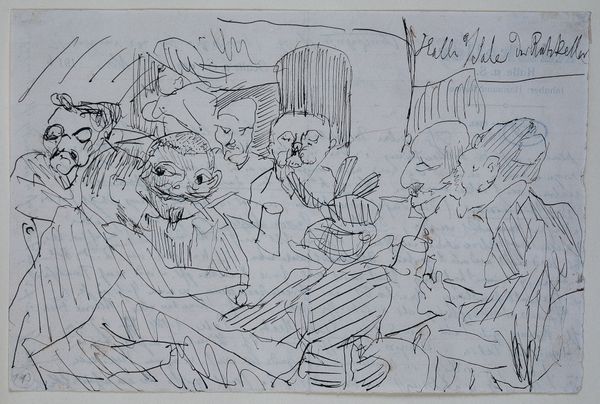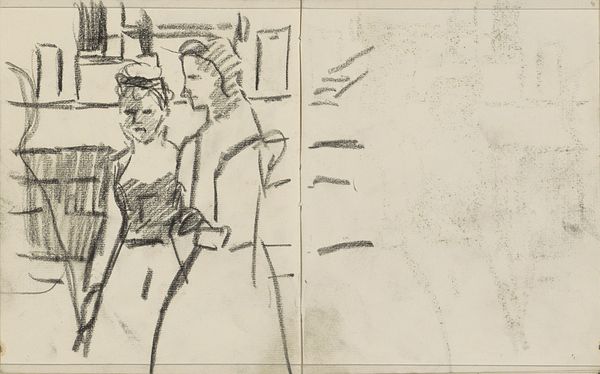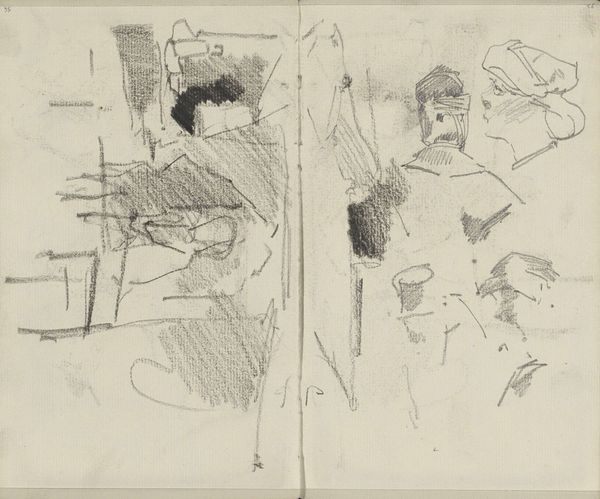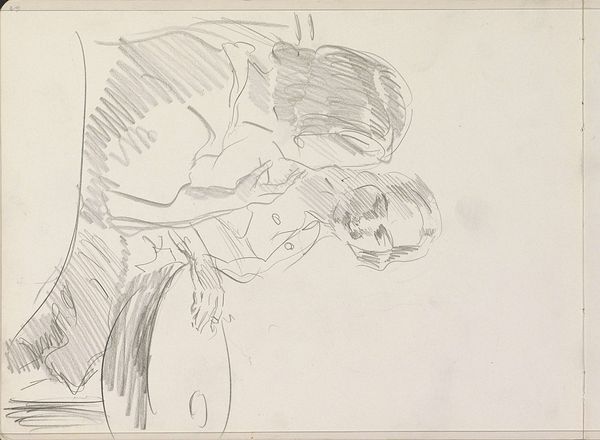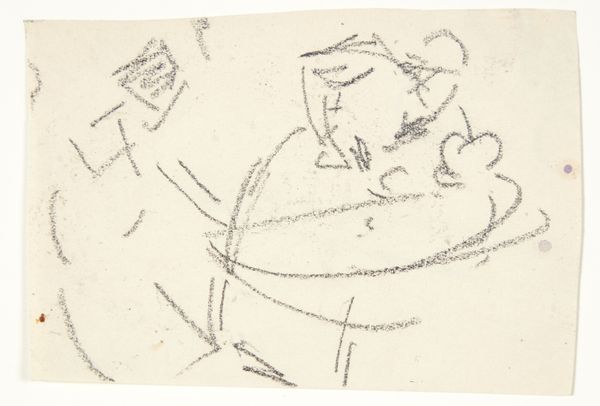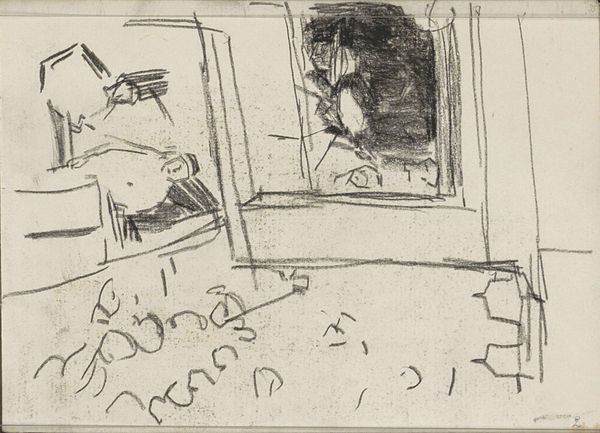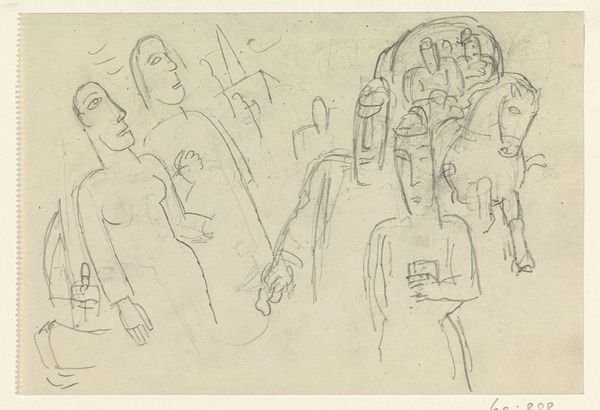
drawing, paper, pencil
#
portrait
#
drawing
#
figuration
#
paper
#
personal sketchbook
#
pencil
#
expressionism
Copyright: Public Domain
Editor: Here we have Max Beckmann’s “Oskar Leifer’s Worldview,” a pencil drawing on paper from 1920. It feels almost like a fleeting glimpse of a conversation, raw and unfinished, very immediate. What leaps out at you when you look at it? Curator: Well, first, the energy! Beckmann’s lines are so jittery and alive; they capture the psychological state as much as the physical appearance, don’t you think? It feels like a very candid portrayal of a turbulent era, maybe a snapshot of the Weimar Republic’s anxieties? The subjects seem almost confrontational, especially the figure with the exaggerated features. Does this come across to you? Editor: It does. There is definitely an element of satire or caricature happening, maybe some critique embedded in that exaggeration. Curator: Precisely! And it's so very Beckmann! It could well be he felt overwhelmed, besieged even, in those tumultuous years, just sketching, trying to make sense of a broken world. It's raw emotion rendered in graphite. And how about that detached hat hanging in the background? Editor: Haha! It does feel almost comically disconnected. Like a lost aspiration. I can’t say I’ve noticed that hat. Curator: Perhaps hinting at a lost sense of belonging, or societal absurdity? Or, or maybe… just a hat. You know, sometimes a hat is just a hat! What has changed in your view since we started the dialogue? Editor: The connection between the chaotic lines and the chaotic times really clicked for me, it does tie it all together! Curator: And that is the brilliance of art, isn't it? Revealing, and, equally important, concealing. Food for our thought!
Comments
stadelmuseum about 2 years ago
⋮
Beckmann was in the habit of carrying a notebook, pad of paper or exercise book with him to record his everyday observations. Depending on the format – horizontal or vertical – demanded by the motif, the artist turned his sketchbook this way or that without regard for the printed lines. On four sheets dating from 1920 (Inv. No. SG 2981, SG 2982, SG 2983, SG 2989), he sketched scenes of funfairs and variety shows. He depicted the throng and the exaggerated gestures and facial expressions of the artists, boxers and spectators. In his own words, he was a “hunter of individualities” seeking to capture the “great orchestra of humanity”.
Join the conversation
Join millions of artists and users on Artera today and experience the ultimate creative platform.
